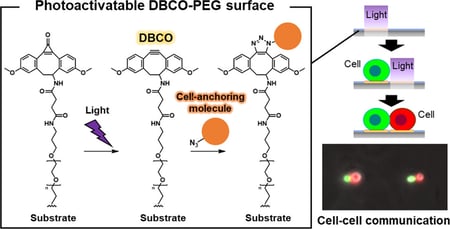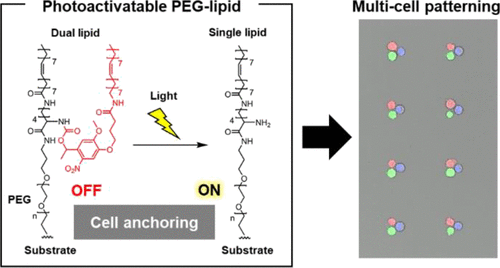Share this
Authors
Takahiro Kosaka, Satoshi Yamaguchi, Shin Izuta, Shinya Yamahira, Yoshikazu Shibasaki, Hiroaki Tateno and Akimitsu Okamoto
Abstract
Methods to construct single-cell pairs of heterogeneous cells attract attention because of their potential in cell biological and medical applications for analyzing individual intercellular communications such as immune and nerve synaptic interactions. Photoactivatable substrate surfaces for cell anchoring are promising tools to achieve single-cell pairing. However, conventional surfaces that photoactivate a single type of cell anchoring moiety restrict the combination of cell pair types and their applications. We developed a photoresponsive material comprising a bioorthogonal photoreactive moiety and non-cell adhesive hydrophilic polymer. The material-coated surface allows conjugation with various cell anchoring molecules in response to light at specific timings and consequently achieves light-induced anchoring of a variety of cells at defined regions. Using the platform surface, an array of cancer cell and natural-killer (NK) cell pairs was constructed on a flat substrate surface and the dynamic morphological changes of the cancer cells were monitored by cytotoxic interaction with NK cells at a single-cell level. The photoreactive surface is a useful tool for image-based investigation of the communications between a variety of cell types.
Journal of the American Chemical Society: https://pubs.acs.org/doi/10.1021/jacs.2c07321
These Related Stories


